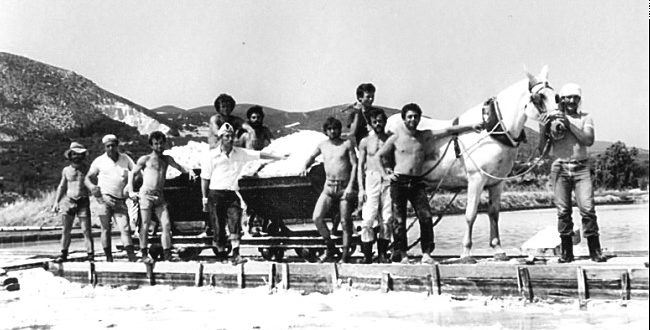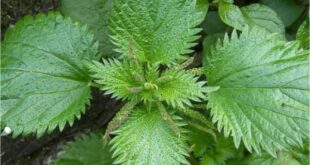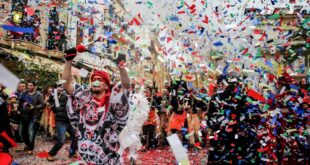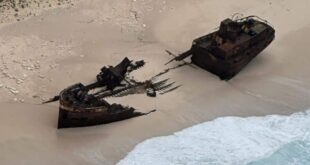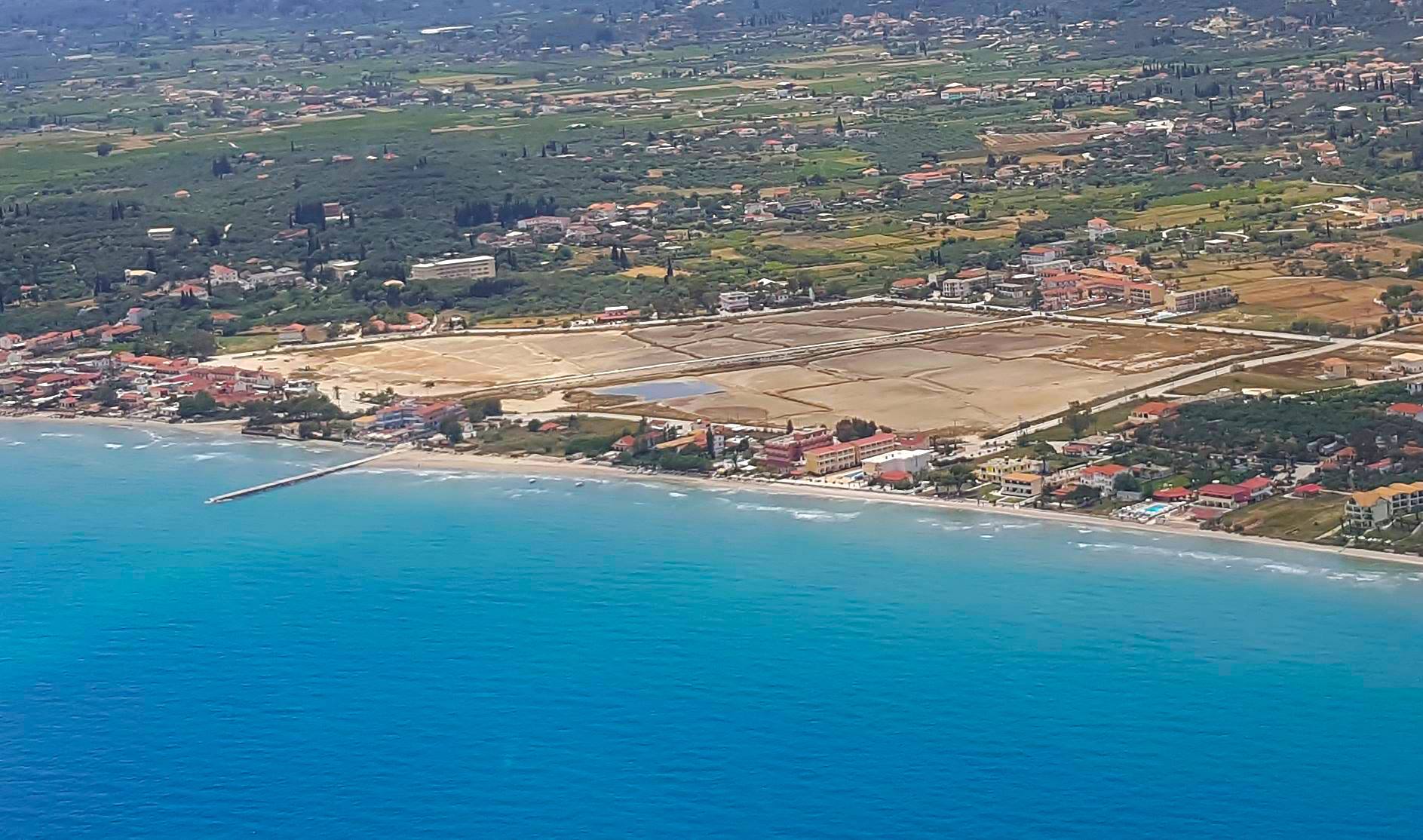
Situated on the east coast of Zakynthos is the resort of Alykes, named after the Greek name for “Salt flats”. Nowadays it’s one of the most popular resorts on the island pulling in visitors from around the world. Close to the resort are the Alykes Salt Flats, a beautiful place that’s now a nature reserve, where walkers enjoy the surrounding scenery and wildlife, flora and fauna that thrive in abundance.
But what is the history behind this unusual part of the island?
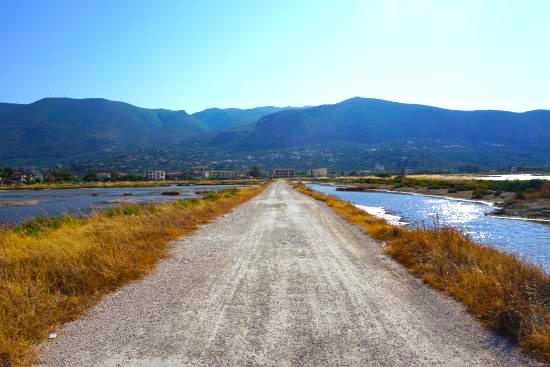
The island is full of geological phenomenon, whether it be the healing sulphurous waters at Xigia beach or the bubbling pitch wells at Keri, to name a few. Zakynthos’ geological past constantly makes its mark, reminding visitors of the island varied history. Salt flats, sometimes also known as salt pans, are areas of flat land or desert that are naturally covered with a variety of minerals including salt. These salt flats normally form naturally when water evaporates or can’t drain away into the ground, so the minerals are left behind after the water disappears. Salt has always played a big part in Greece’s history, and in ancient times many areas of Greece used salt as a slave trade commodity. Salt was also important in Ancient Greece for practising rights that were connected to magic, myth and even religion. No one knows whether the salt flats of Zakynthos were used for these purposes, but as the island was on a major trading, piracy and military routes, and has an extensive history going back thousands of years, it’s likely that the salt, like other geological remnants such as stone, bitumen and sulphurous waters, would have also been used by ancient residents for a multitude of things, including trade.
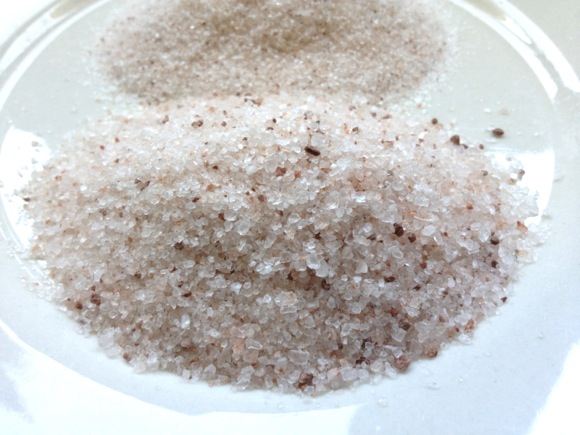
In the past the main exportation of salt from the Ionian islands came from Corfu, where the Venetians operated three different sites, one of which contained around 800 salt flats alone. These Corfu sites produced fine salt for export use, as well as some local use. Many of Zakynthos’ natural products were also exported off the island, and we know from historical evidence that there were both harbours and dry docks along the east coast. Whilst little information exists about the salt flats at Alykes, there is further evidence that some limited exportation of salt took place in the past, as many ships stopped off at Zakynthos heading either to or from Corfu. This ancient production was brief however and the area was eventually taken back by nature.
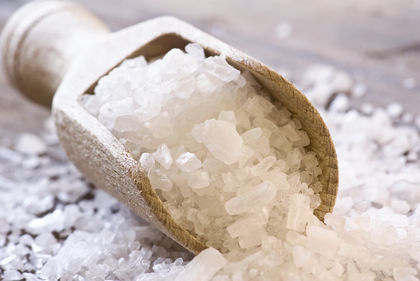
What we do know is that after World War II ended, the Greek Government decided to increase its sea salt production and one of the areas they chose was Alykes in Zakynthos. As the area was abundantly flat, with some history of past production, it was an easy choice, and so the business of sea salt production began. It was a simple set up. Areas were divided off into pans, and there were basic metal “railway” type tracks running across them, with wheeled metal tip-wagons that ran along the tracks for easy movement of the minerals.

Work in the salt flats was hard, and most of it was done by hand, with assistance from horses or donkeys.Tools were basic handheld shovels, and the odd pick axe was also on hand if required. Workers would dig the sea salt from the flats and load it into the wagons that were then pulled along the tracks to a designated area. Here the wagons were tipped and the mineral was dumped into piles to wait for collection and exportation.
 Much of the work took place during the day, sometimes in the hottest of weather. The sea salt was often light or white in colour and the glare from the sun was bright for those working the flats. The sea salt also caused irritation and cracking to the skin if workers got too much on it. For many workers it was hot, backbreaking and exhausting work.
Much of the work took place during the day, sometimes in the hottest of weather. The sea salt was often light or white in colour and the glare from the sun was bright for those working the flats. The sea salt also caused irritation and cracking to the skin if workers got too much on it. For many workers it was hot, backbreaking and exhausting work.
 The salt flats at Alykes in Zakynthos operated for around thirty years, but a decision was made around 1970 to stop producing sea salt from this area, in 1980 the site was officially closed by the Greek Government as it was felt that it was no longer worth operating, and so the business and its workers were resigned to the past. Since then nature has crept back in and the once busy industrial area of the island, with hundreds of years of history, is now home to local and visiting wildlife, and a beautiful place to walk, take in the view of the mountains and get a small glimpse of the past.
The salt flats at Alykes in Zakynthos operated for around thirty years, but a decision was made around 1970 to stop producing sea salt from this area, in 1980 the site was officially closed by the Greek Government as it was felt that it was no longer worth operating, and so the business and its workers were resigned to the past. Since then nature has crept back in and the once busy industrial area of the island, with hundreds of years of history, is now home to local and visiting wildlife, and a beautiful place to walk, take in the view of the mountains and get a small glimpse of the past.
Photos courtesy of Rab Currie and Zakynthos Archives
 Zakynthos Informer Zakynthos Informer
Zakynthos Informer Zakynthos Informer

